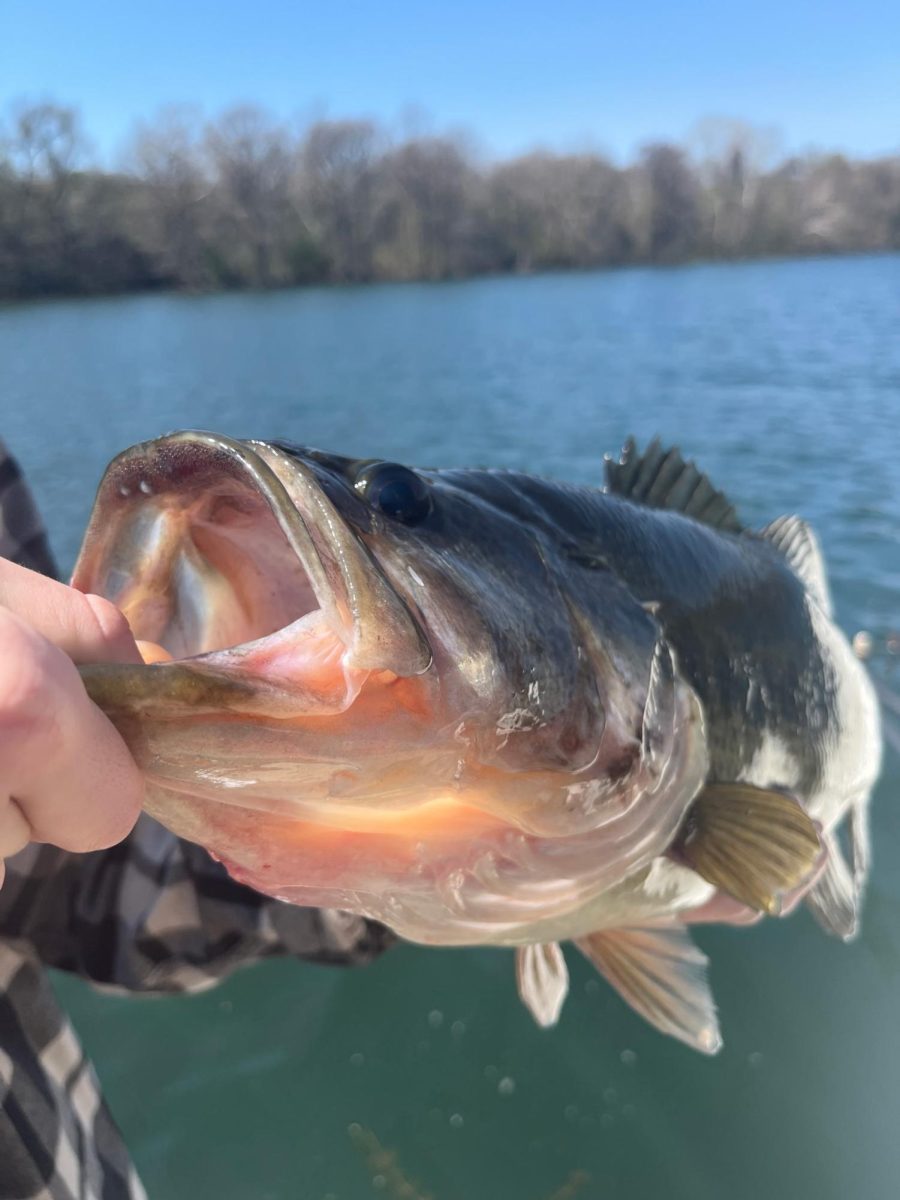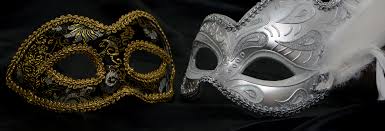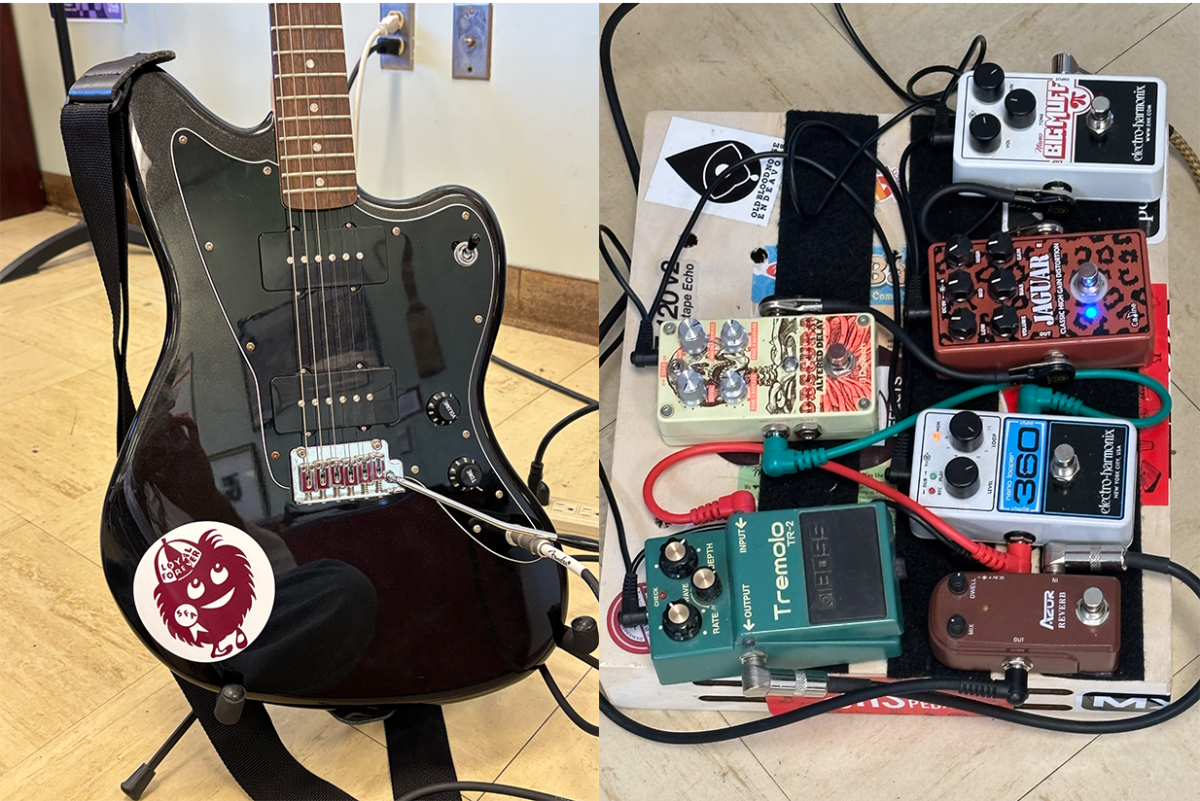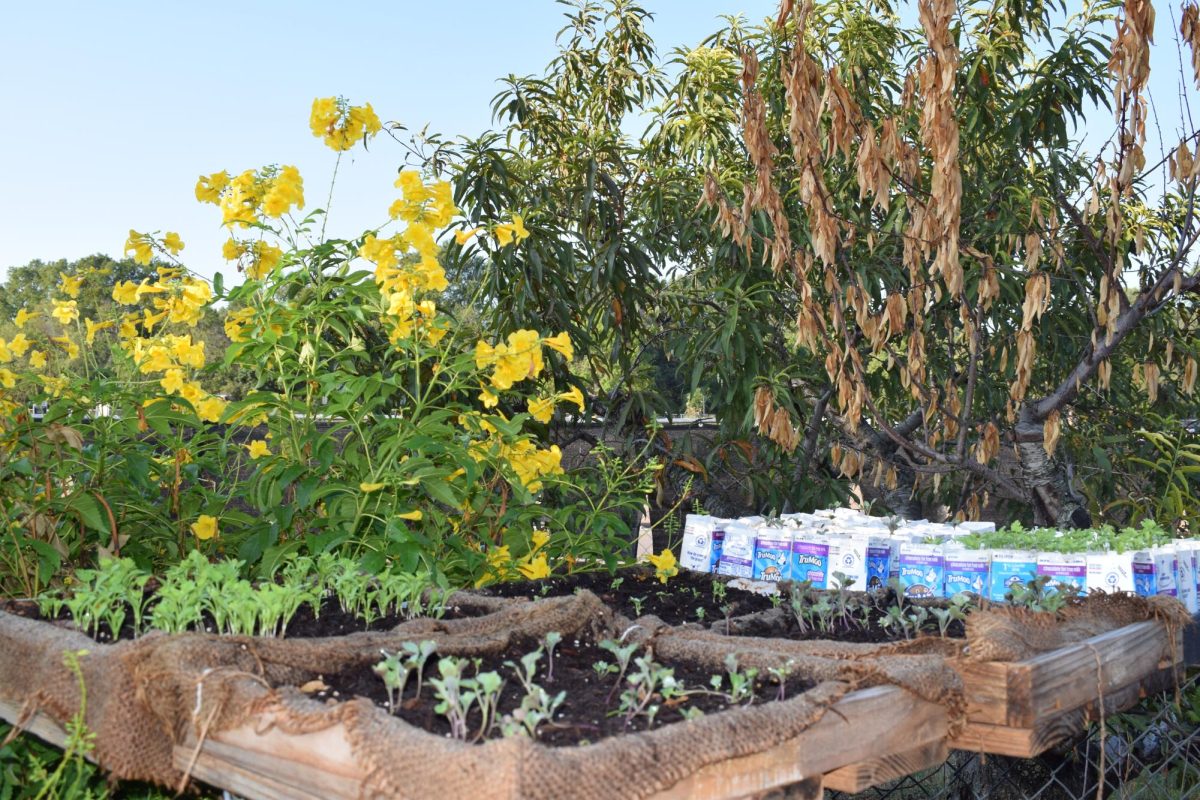Lady Bird Lake is a popular and known location not only throughout Austin, but throughout all of Texas. Friends and family come all the way from Brownsville to have fun at the lake. Whether they are swimming in Barton Creek, paddleboarding, fishing, renting a kayak, or just relaxing, Lady Bird Lake has something for everyone. But most are unaware that it’s one of the most excellent fishing locations around.
Recently, two huge fish have been caught that broke multiple records. Big largemouth bass are currently easier to catch because the juveniles from spawning season aren’t yet big enough to go for traditional baits, leaving only their parents. Some students and other anglers have been able to catch multiple bass ranging from six to nine pounds recently, but one fisherman named Willie Pipkin recently set a record with a 14 pound Largemouth Bass. The fish qualified for the Toyota Sharelunker selective breeding program, meaning it was temporarily taken to a breeding facility where it produced eggs to make genetically larger fish to be stocked into ponds and lakes across Texas. Afterwards the fish was safely returned to Lady Bird Lake.
The other record was a Smallmouth Buffalo fish that weighed in at 71 pounds. The world record for Smallmouth Buffalo is only about ten pounds heavier, and this 71 pound fish shattered a state record, currently being the largest Smallmouth Buffalo caught in Texas. However, there are even bigger fish hiding in the depths, or rather the shallows, of Lady Bird Lake. Multiple eye witnesses saw a large shark-like fish that appeared to greatly exceed 70 pounds. The fish appeared to be about the size of an average person from a bird’s eye view. It had a wide yet long body with pale gray scales. It looked like a very large carp, but carp cannot get anywhere near this size, meaning it was likely another Smallmouth Buffalo, although this being far larger in size. The fish was so massive that those who saw it were startled upon its sudden appearance. Unlike all other fish in the lake, this fish had no fear of the fishermen, swimming close enough to count the scales on its back. The fish left and hasn’t been spotted again, but it is still out there, waiting to break a record, or a rod.
Despite Lady Bird Lake being a good bass fishing location, anglers that are new to the lake can sometimes struggle to catch the Bass. Lots of these fish are old and pressured, meaning they have seen many baits and lures, so they don’t take every one they see. But all you need to start catching them is a little knowledge. During summer and hot days when fishing the open water of the lake, you will mostly see dense weeds and vegetation below you. This often discourages fishing in these areas, but this is actually where some fish go to get out of the sun. They can be caught in these weeds using weighted Texas rigs, some of the most effective being soft plastic crawfish, and Yum Thump’n Dingers of green or red color. Another problem which discourages fishing in certain spots is a lot of weeds and plants floating on the surface of the water in places like Barton Creek and near the bank. Big bass love spots like this during summer, and can be caught with your basic topwater frog. Stick to smaller frogs, otherwise large loud ones can spook the fish. Even though the weeds look dense, these large fish will surprisingly punch right through it to eat the frog. Popping frogs aren’t necessary, because you will want to not only put the frog in the gaps and edges of the weeds, but right over the weeds. Also note the popping frogs don’t do very well in the weeds, often filling up with water and struggling to float by the time you bring them back. Often topwater frogs don’t have a good hookup ratio, so too make sure you hook all the fish that bite, don’t be scared to bend the hooks back a bit, or even soften the plastic of the frog. Many anglers like to boil their frogs for about 30 seconds until the plastic is notably softer, but if you do, it’s advised that you don’t use that same pan or pot for food. Soon, the bass population will get a lot larger, with the schools of baby Bass growing quickly. Once large enough, you will be able to catch these smaller bass in quick succession by finesse fishing Roboworms, the best color being morning dawn or dark green if they start to get bigger and smarter. You can also use a wacky rig in some spots where there’s less weeds to get caught on, but if there’s a current, weeds will likely be rushing by trying to catch your line and hook. Don’t let windy days or choppy water discourage you, these are times when you should use spinner baits, white being the most effective color. The white spinner bait appears as a little fish who’s gotten lost in the waves and current, making a perfect meal for a predator. Outside of these conditions spinnerbaits are not the best option for Lady Bird Lake, as they will catch a lot of weeds and often not attract any bass. However square bill crank baits have had some success when there are less weeds at certain times of the year.
In conclusion, Lady Bird Lake has way more to offer than meets the eye, and you don’t even need experience to catch a fish. The lake also holds a large population of bluegill, which can be caught in large numbers with just some bread or insects on a hook. Just be careful of their spikes when handling them!









